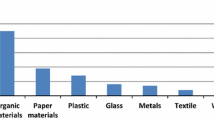Abstract
This paper describes a method for identifying places for safe disposal of hazardous waste materials in the Egyptian Suez Canal Corridor. Hazardous waste is defined as a material that poses a threat to public health and the environment because of its ignitability, reactivity, corrosively, or toxicity. Industrial zones of the Suez Canal corridor produce large amounts of hazardous waste. To mitigate the deleterious impact of hazardous waste, it should be disposed of in an environmentally safe process. This includes selecting a site that will not contaminate groundwater, create dust, and noise in residential neighborhoods and has the capacity to last at least 10 years. The standards used in this paper were established at the Basel Hazardous Waste Convention in 1992. They include social, economic, environmental, geological, hydrological, and geomorphological variables. Geographic information systems (GIS) and remote sensing were used to prepare a geospatial database representing the Basal Convention criteria for the study site. The information required to build the geospatial database were collected through field surveys, interpretation of satellite images, and from previous published scientific research. The criteria were weighted based on their roles and importance. Based on the weighted criteria, an analytical hierarchy process (AHP) was used to select the most environmentally sound sites. Through the AHP, two suitable sites were identified as being suitable for hazardous waste disposal.
























Similar content being viewed by others
References
Abd-El Monsef H. (2010) Selecting the best locations for new dams in Wadi El-Arish basin using remote sensing and geographic information system, Sinai International Conference for Geology & Development, Saint Katherine, South Sinai, Egypt
Alyamani M, Sen Z (1993) Determination of hydraulic conductivity from grain-size distribution curves. Ground Water 31:551–555
Barseem M, El Lateef H, Abdel Rahman A (2015) Geoelectrical exploration in South Qantara Shark area for supplementary irrigation purpose-Sinai-Egypt. Hydrol Curr Res 6:207. https://doi.org/10.4172/2157-7587.1000207
Blott S, Pye K (2001) GRADISTAT: a grain size distribution and statistics package for the analysis of unconsolidated sediments. Earth Surf Process Landf 26:1237–1248
Boroumandi M, Khamechyian M, Nikoudel R (2015) Hazardous wastes landfill site selection using analytical hierarchy process (AHP) in Zanjan province. J Environ Sci Technol 16(4–63):97–109
Cetin M (2015) Using GIS analysis to assess urban green space in terms of accessibility: case study in Kutahya. Int J Sustain Dev World Ecol, 2015c 22(5):420–424
El Banna M (2004) Geological studies emphasizing the morphology and dynamics of sand dunes and their environmental impacts on the reclamation and developmental areas in northwest Sinai, Egypt. Ph. D. Dissertation, Department of Geology, Cairo University, Egypt
El-Ghawaby M (1979) The tectonic development of North Eastern Corner of Africa, First Geological Congress of the Middle East (GEOCOME-1), Ankara, Turkey, 30 pp.
El Kayali M. (1984) Geomorphologic studies of the coastal plain, north Sinai Peninsula. PhD Thesis, Ain Shams University. Ismailia, Egypt
Geriesh H. (1989) Hydrogeological investigations of West Ismailia area, Egypt, M.Sc. Thesis (unpublished), Faculty of Science, Suez Canal University, Ismailia, 210p
Hermas A, Sebastien L, Islam A (2012) Retrieving sand dune movements using sub-pixel correlation of multi-temporal optical remote sensing imagery, northwest Sinai Peninsula, Egypt. Remote Sens Environ 121:51–60
Khamehchiyan M, Reza N, Boroumandi M (2011) Identification of hazardous waste landfill site: a case study from Zanjan province, Iran. Environ Earth Sci 64:1763–1776. https://doi.org/10.1007/s12665-011-1023-y
Khidr M (2006) Aeolian forms and their hazards in the west of Wadi El-Arish: a geomorphological study. PhD Dissertation, GeographyDepartment, Ain Shams University, Egypt
Misak R, El Shazly M (1982) Studies on blown sand at some localities in Sinai and northern desert, Egypt. Egy J Geo, Special Issue 1:115–131
Mounir M (1983) Sand dunes in Egypt. Cairo, Egypt: Academy of Scientific Research and Technology, 175 pp.
Moghaddads N, Namaghi H (2011) Hazardous waste landfill site selection in Khorasan Razavi Province, Northeastern Iran. Arab J Geo Sci 4:103–113
Pandiyan P, Murugesan A, Vidhyadevi T, Dineshkirupha S, Pulikesi M, Sivanesan S (2011) A decision making tool for hazardous waste landfill site selection. Am J Environ Sci 7(2):119–124
Philip G, Attia1 O, Draz M, El Banna M (2004) Dynamic of sand dunes movement and their environmental impact on the reclamation area in NW Sinai, Egypt. Proceeding of the 7th Conf. Geology of Sinai for Development, Ismailia 7:169–180
Rahmat G. Niri V., Alavi N. (2017) Landfill site selection using GIS and AHP: a case study: Behbahan, Iran. J Civ Eng, 21:111. Available from https://doi.org/10.1007/s12205-016-0296-9
Saaty T (1990) The analytic hierarchy process in conflict management. Int J Confl Manag 1(1):47–68, available at. https://doi.org/10.1108/eb022672
Saeidi M, Abesi A, Sarpak M (2009) Locating a suitable place to bury hazardous waste using GIS rating and AHP: case report of Shahid Rajaee Powerhouse. Environ Sci Technol 11(1):231–241
Shukri N, Philip G (1955) The geology of the Mediterranean coast between Rosetta and Bardia. Recent sediments. Bull Inst Egypt 37:643–659
Taha A, El Mahmoudi A, El-Haddad I (2005) Geoelectrical exploration for groundwater around the New communities, East Nile Delta. Proceedings of symposium on application of geophysics to engineering and environmental problems (SAGEEP), Atlanta, GA, USA, ISSN 1554(8015): 643–659
Tsoar H (1974) Desert dunes morphology and dynamics, El Arish, northern Sinai. Z Geomorphol Suppl 20:41–61
UNEP (2012) Basel Convention technical guidelines. The Tenth Meeting of the Conference of the Parties to the Basel Convention on the Control of Transboundary Movements of Hazardous Wastes and their Disposal (decision BC-10/7), Cartagena, Colombia
Youssef M (1968) Structural pattern of Egypt and its interpretations. AAPG Bull 52:601–614
Funding
This work was supported by the Egyptian Ministry for Scientific Research, Science and Technological Development Fund (STDF), Project ID: 5707 entitled “Landfill Site Selection for Hazardous Waste Produced by Industrial Zones of Suez Canal Corridor Using Remote Sensing and Spatial Information Technology.”
Author information
Authors and Affiliations
Corresponding author
Rights and permissions
About this article
Cite this article
Abd-El Monsef, H., Smith, S.E. Integrating remote sensing, geographic information system, and analytical hierarchy process for hazardous waste landfill site selection. Arab J Geosci 12, 155 (2019). https://doi.org/10.1007/s12517-019-4266-7
Received:
Accepted:
Published:
DOI: https://doi.org/10.1007/s12517-019-4266-7




